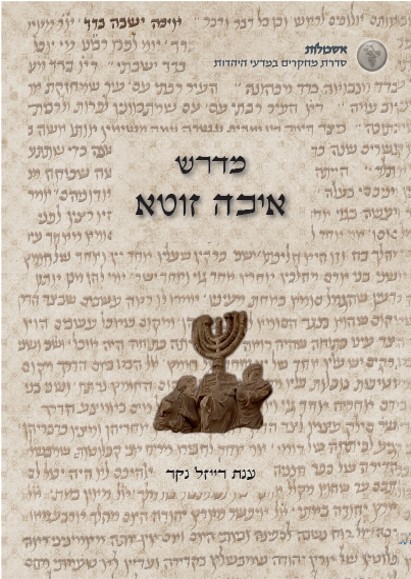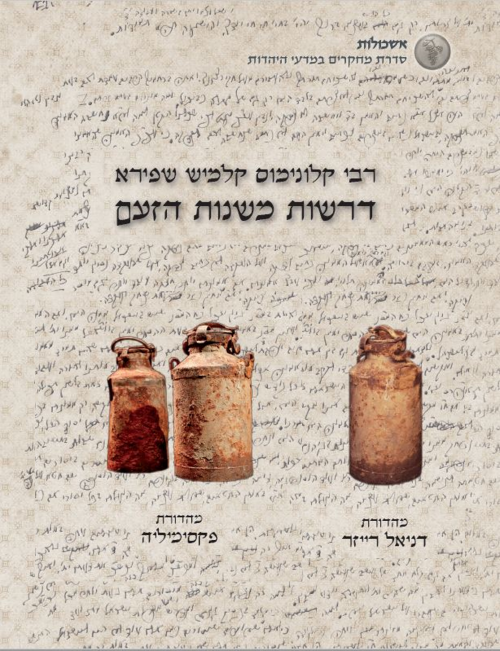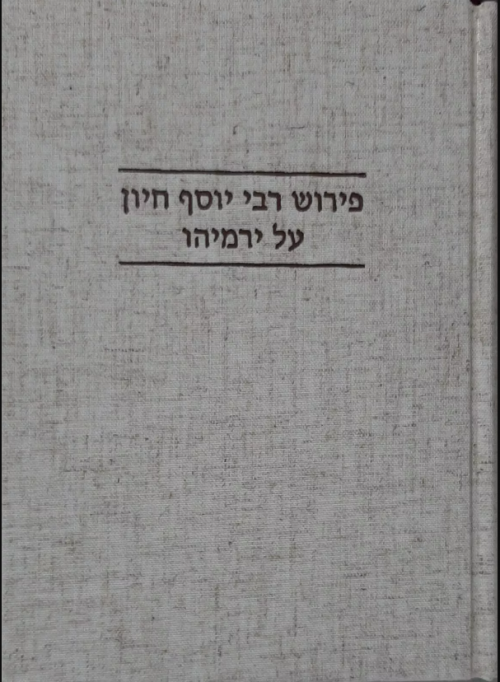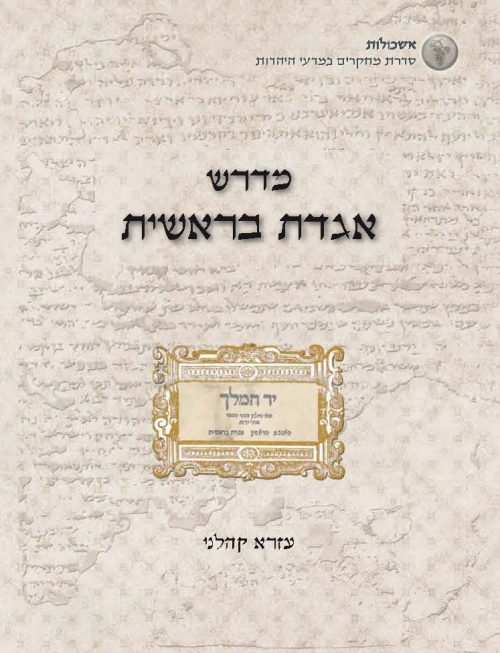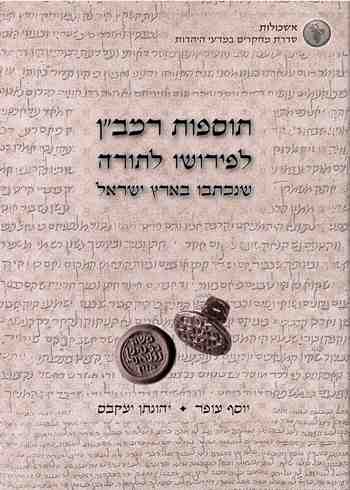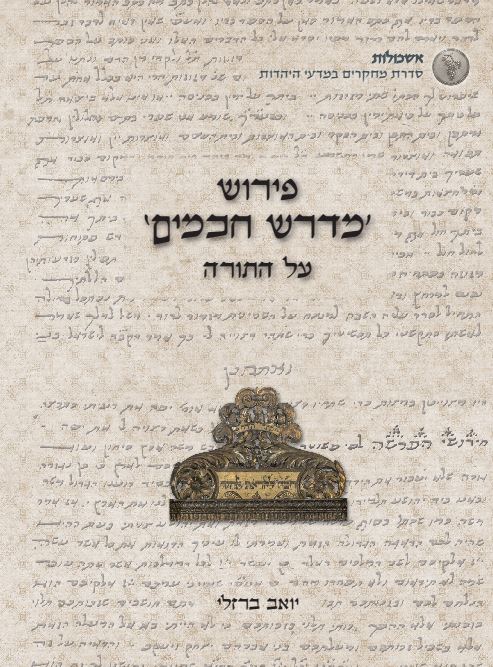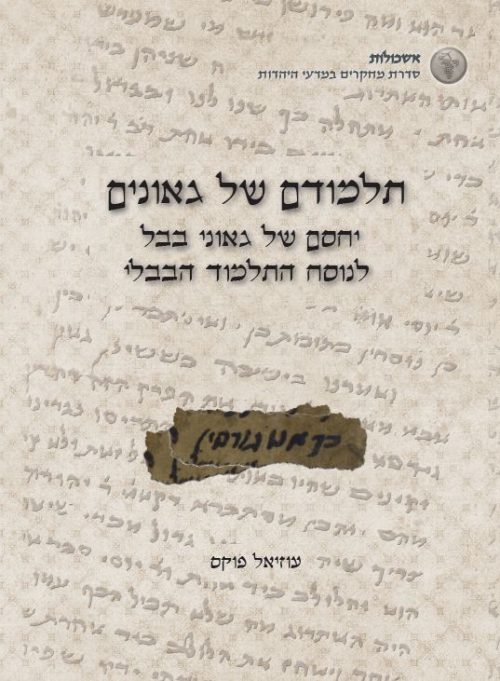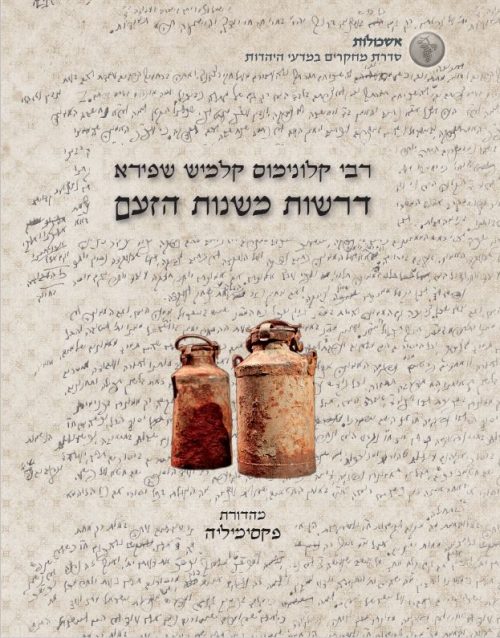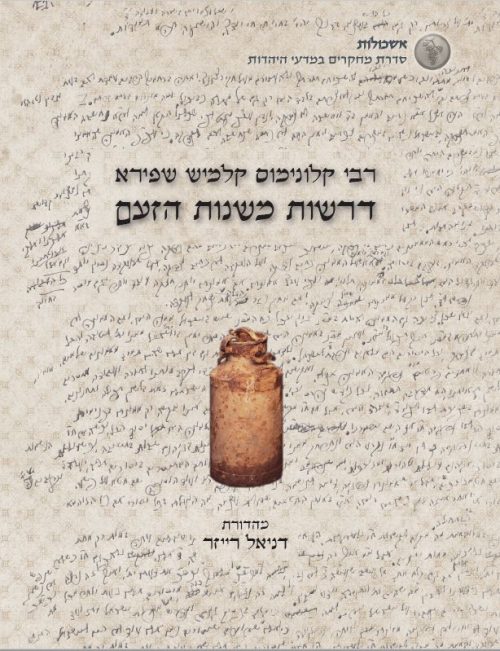-
Sale!
Coming Soon!
-
Sale!
Scholarly and Facsimile Edition This book presents the sermons of Rabbi Kalonymus Kalmish Shapira, The Piaseczno Rebbe, which were delivered during the Holocaust years in the Warsaw Ghetto. The second volume is a facsimile edition, with the original manuscript on one side and the detailed line-by-line presentation of the text as the Rebbe corrected it. The second volume includes the words and passages that were deleted and is printed in 4 different colors which follow the proofs and changes that the Rebbe made in the text.
-
Sale!
Table of contents can be found in this link.
-
Sale!
Coming Soon!
-
This book presents three hundred pieces added by Rabbi Moshe ben Nachman (Nachmanides) to his commentary on the Torah when he made Aliyah to Israel at the end of his life. The added segments were identified according to update lists sent by Nachmanides himself and others to the Diaspora, as well as on the basis of extensive comparative examination of all the hand-written transcripts of Nachmanides' interpretation of the Torah found today in the world (about fifty in number). There is a comprehensive introduction at the beginning of the book, that discusses the phenomenon of the additions and analyzes the findings of the hand-written transcripts and surveys the reasons and for these additional pieces. The bulk of the book is comprised of interpretive discussions detailed in every piece; whose purpose is to clarify Nachmanides' motives when making additions to what he first wrote. In the book itself – and the website that accompanies it – detailed information is presented about the additions and the evidence of them in the list of additions and the hand-written transcripts. The awareness of the commentary's formation by those who studied the commentary, both at large and specifically for each particular piece, adds a new dimension to the commentary, and is a significant contribution to understanding the way of Nachmanides, to solving problems in his sayings and clarifying his intent. To this end, the book is a very important tool for scholars of Nachmanides, Torah learners and lovers.
-
Sale!
The commentaries of Midrash Chachamim were written by an anonymous Italian author in the early sixteenth century as part of an extensive commentary to the weekly portions of the Torah reading. Throughout the work, the author copied the early complete midrashim such as Genesis Rabba and the halakhic midrashim almost verbatim. His autonomous creation is contained mostly in the commentaries to those portions that are missing in the halakhic midrash, and as such they are contained in the books of Exodus, Numbers and Deuteronomy (though not for all portions of these books). The author tried to explain the verses according to their plain meaning, although he often incorporated in-depth discussions as well as interpretive and pedagogic excursus. In this edition, for the first time, the commentaries of Midrash Chachamim were collated from manuscript for the 27 weekly portions for which they were written, and brought together in order to present the author’s hermeneutical approach. The edition is complemented with an introduction that shows the background for writing these commentaries and discusses the style and interpretive techniques employed by the author.
-
Sale!
The Babylonian Talmud is the fundamental work of the Oral Law, both by virtue of the widespread and intensive study of it, and by virtue of reliance on it in halakhic writings, for over a thousand years. The Talmud gained much of its importance during the Geonic period. Throughout this time its transmission shifted from oral recitation to written copies, its text became standardized, and it was sent out from the Babylonian academies across the Jewish diaspora. Its intensive study and complex system of transmission both orally and in writing resulted in many variant readings between extant copies. This book deals with questions concerning the ways in which the Babylonian Talmud became such as seminal work, and especially the Geonate’s treatment of the its textual tradition: the ways in which the Geonim related to the variant readings, how they chose between them, and according to what criteria; to what extent were its early readings preserved and to what extent was its text altered. In the second half of the book the entire corpus in which the Geonim deal with Talmudic variants is presented and discussed.
-
Sale!
Facsimile Edition This book presents the sermons of Rabbi Kalonymus Kalmish Shapira, The Piaseczno Rebbe, which were delivered during the Holocaust years in the Warsaw Ghetto. The second volume is a facsimile edition, with the original manuscript on one side and the detailed line-by-line presentation of the text as the Rebbe corrected it. The second volume includes the words and passages that were deleted and is printed in 4 different colors which follow the proofs and changes that the Rebbe made in the text.
-
Sale!
Scholarly Edition This book presents the sermons of Rabbi Kalonymus Kalmish Shapira, The Piaseczno Rebbe, which were delivered during the Holocaust years in the Warsaw Ghetto. The second volume is a facsimile edition, with the original manuscript on one side and the detailed line-by-line presentation of the text as the Rebbe corrected it. The second volume includes the words and passages that were deleted and is printed in 4 different colors which follow the proofs and changes that the Rebbe made in the text.

